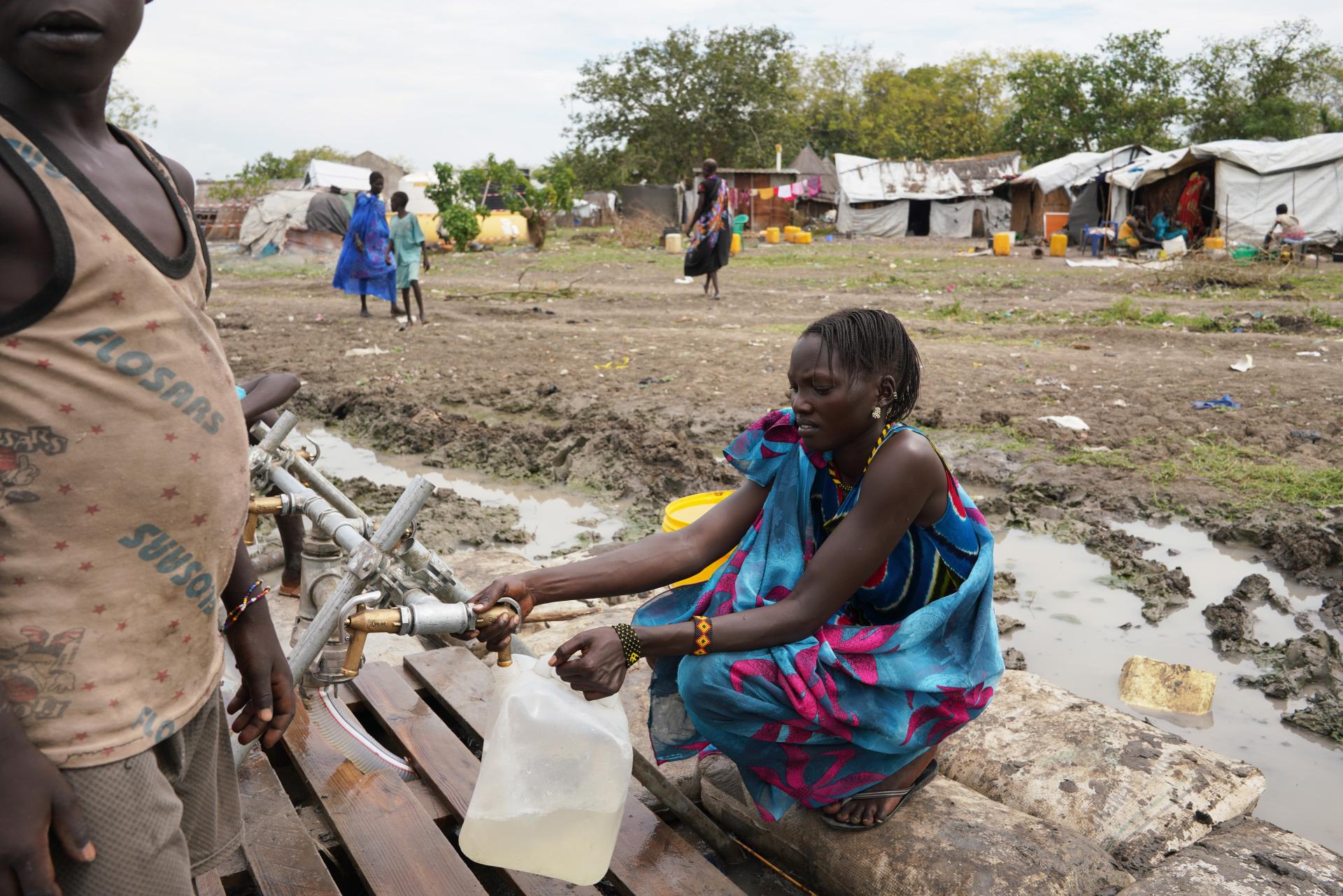I’ve worked for MSF in the logistic department for two years. Logisticians support our medical colleagues, so that they can get on with doing their life-saving work. I had already done three missions, but the assignment in Pibor was my first experience with the emergency response team.
I was very happy to be part of the emergency team. It was a very interesting, but not always easy, experience. When you’re part of the emergency pool, you need to be very flexible; you do whatever needs to be done that day. Sometimes, you’re making sure everyone has the resources they need, other times you’re doing administration, resource management or data collection.
Pibor was a difficult emergency. The flooding meant that people were trapped, living on small islands of dry land above the flood levels. Everywhere around them was water. It was a big challenge to reach them. MSF set up its emergency response on three islands, Pibor, Gumuruk and Lekuangole. But these were only three among hundreds of islands. It was very hard for us to get help to all these people because they were so spread out and many could only be reached by boat or helicopter. Our hospital was built on Pibor, one of the bigger islands. There were around 7,000 people living together on that one island. There was a lack of food, a lack of drinking water; no education and no proper sanitation.
Moving people and materials from one place to the other was very difficult because of the water and the ‘black cotton mud’, which is like cement. It’s really sticky and near impossible to move through. Walking a kilometre would take us about an hour.
The water treatment plant
One of the first big logistics projects that I worked on in Pibor was constructing a new water treatment centre to provide clean water to the local population. The people trapped by the flooding on these small, temporary islands were packed in so densely. There were no latrines, no spaces for garbage or waste, and the existing taps and boreholes were all underwater. In these circumstances, clean water was essential and providing it was an important part of our efforts to prevent the spread of water-borne diseases like cholera.
Thinking like logisticians, we decided to use the water that surrounded our island as the supply for our water treatment centre. We pumped flood water into a large onion tank, like a big plastic swimming pool, which could hold 30,000 litres of water. Then we cleaned the water using a process called flocculation where all the contaminants stick to each other and sink to the bottom. We take the partially cleaned water, filter it and then purify it with chlorine.
To ensure the water treatment centre would be stable, even as the ground beneath flooded and shifted, we built it on a platform of drum barrels, which we found floating in the old hospital and then filled with flood water to give them more stability. The old hospital was under two metres of flood water, but we re-used anything we could recover from it, even old sandbags.
That little water treatment centre could provide a constant supply of clean water for those living in Pibor and for our hospital.
The many jobs of a logistician
As well as the water treatment centre, I worked on many projects during my time in Pibor. The first project was setting up a clinic with inpatient and outpatient wards. The inpatient ward had enough beds for 20 patients to stay overnight and in the outpatient ward our medical teams could do over a hundred consultations a day.
During my first few days in Pibor I supported the health promotion team, whose job it is to spread health messaging and gather data on the needs of local communities. In an emergency it is essential to know who is living where and what their health needs are. This helped inform discussions about how much water we needed to produce and how large the new hospital had to be.
One of the few constants in my days was the MSF helicopter. Each day, I was responsible for helping the helicopter to land. It was our one source of regular supplies and patient transfers. It was interesting to get to know the pilots, to give them the weather update in the morning, then to help them land the helicopter safely, and ensure it could make it back safely from Pibor.
I was in charge of maintaining the pharmacy and the ‘cold chain’, the supply chain that ensures temperature-sensitive vaccines are kept cold. For example, if the air conditioning is leaking water in to the pharmacy, then the logistics team need to quickly find a solution that prevents the medicines from being underwater.
Conclusion
Every day as a multi-functional logistician is really challenging; you try to reach your goals and support the medical team however you can. Sometimes you don’t have much time or many resources, so you have to be very creative with other solutions. You use what you have, as best you can. And, in the end, you’re very happy that you built a hospital, that you setup a water treatment centre; that people have safe water to drink and a functioning health centre to be treated in.
It was really clear that the community appreciated MSF’s work in Pibor. They knew that we were there to provide medical care and safe water. They were so grateful to our team, and I was so proud to help.
